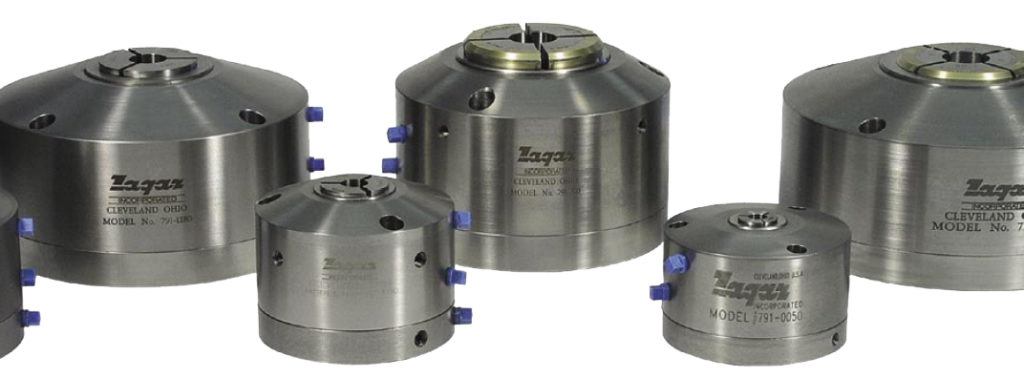When the Collet Outperforms the Jaw Chuck.
Sometimes a three jaw power chuck is not the best tool for the job. The collet chuck offers speed, accuracy and productivity advantages that could be crucial to the application. The following are instances where the collet is a better choice than the jaw chuck.

Weight control situations. The lathe spindle has a weight cap based on bearing load capacity. Where there is a real danger of exceeding the weight limit, and overloading the bearings, the massively heavy jaw chucks are ruled out in favor of collet chucks.
Spindle Speed. When you need speed, collets outperform jaw chucks. Collets are adept at turning at high rpm levels. Chucks will need more time to accelerate up to speed, while the evenly balanced collet, given the same horsepower can more quickly achieve acceleration, with higher productivity and shorter cycle times. That comes from the centrifugal force on the chuck, which is exponentially stronger at high speeds. Centrifugal force has little effect on the clamping force, delivering higher consistency in grip.
Accuracy. The collet will apply that clamping force 360 degrees around the part, instead of at select contact areas of the workpiece, resulting in preferable concentricity. This is especially useful in a sequential production when the workpiece will receive multiple operations where accuracy is a concern as related to prior operations. Regardless of which workholding fixture is used for the first operation, a collet fixture may be the preferred workholder for sequential operations for its precision clamping. Consider the 0.0006 to 0.0012 inch TIR repeat range of a bored soft jaw chuck, compared to the typical repeatability of 0.0005 inch TIR or better. Secondary operations can achieve more accuracy, when the collet chuck is adjusted for concentricity during installation.
Size does matter. Normally, Collets work best when workpieces are smaller than 3 inches in diameter, but a collet can also limit the workpiece length. A collet chuck limits the machine’s range of axial travel because it is longer than a jaw chuck. If the machining piece of the part takes up all of the travel available in the machine drilling or cutting it, a collet may not work.
Ironically, extremely large lot sizes and exceptionally small lot sizes both denote choosing a collet over a jaw chuck. The faster changeover time works better in smaller, frequently changed lots. Jaws take fifteen to twenty minutes to change out, or one minute in a specially designed quick change jaw chuck, but changing out a collet usually can be completed in fifteen to twenty SECONDS. That kind of time savings can add up fast. On a large lot, the cycle time is cut, due to the shorter time for opening and closing in a collet than a jaw chuck. That reduces the noncutting time between workpieces.
Limits. Collet chucks actuation stroke is shorter, which partly explains the time savings between cutting. If the part size is consistent, a collet chuck will deliver far more speed than the jaw chuck can. If size will vary significantly, the jaw chuck can accommodate the range better.
In the Zagar complete line of collet, collet fixtures and accessories, the rotating and stationary fixtures offer high holding pressure and machining accuracy. Zagar collets are precision built to maintain tight tolerances for every application. A variety of styles are available from stationary, rotating, basic, manual, vertical/horizontal to turn table. Get more information at https://www.zagar.com/contact/, or by email to sales@ZagarInc.com or call (216) 731-0500 today.
